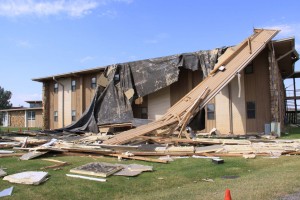This article, published in the New York Times, addresses the potential link between fracking and earthquakes occurring nearby. Poland Township in Ohio experienced two earthquakes in one day that were estimated to have originated within less than a mile from a fracking site. Work was halted while it is determined “whether drilling operations induced the earthquakes,” but this isn’t the first time fracking has been tied to earthquakes in the vicinity (Fountain, 4). Fracking has been linked to earthquakes in “Ohio, Arkansas, Oklahoma and other states, and in several countries” in the past (Fountain, 4).
Category: getting started (Page 4 of 8)
The article is about the various benefits a company can get from using sustainable alternatives, such as employee health and customer satisfaction.
In Copenhagen, Denmark bicycles are the norm and cars are in the minority, 5.2 bicycles for every car. Bikes are actually often the fastest way to get around. Increased biking usage could not only reduce air pollution and greenhouse gas emissions, but also lower people’s risk of developing a number of diseases. This article examines the bike friendliness of several cities around the world and also shows the dangers involved in cycling.
GMOs or genetically modified organisms are a hot topic between the U.S. and the EU. One explanation for the difference in policies toward GMOs in the EU and the U.S. is consumer experience. In the U.S. consumers hold the FDA in high regard and trust their decisions on GMOs while in the EU consumer are more hostile towards GMOs. Many European companies and even Prince Charles made public statements against the use of GMOs which alter public perception. Another explanation is that buffering zones between GMOs and normal crops would be more costly in the densely packed landscape of Europe. In addition, both producers in the EU and in the U.S. now have incentives to maintain their positions on GMOs and lobby their governments. EU farmers would be harmed by eliminating the ban while U.S. farmers would gain. The EU is using the precautionary principle as their defense for their stance. The concept is that the side effects of using GMOs are still unknown so they could have negative health effects on consumers.
This article says there may be health/environmental risks to GMOs
http://rt.com/usa/usda-gmo-risk-report-537/
While this one explains the difference stances the EU and US have on GMOs as a result of culture and trade policy.
13 workers at a nuclear burial site were exposed to an breathed in radioactive material. However it is too soon to see how much health risk this exposure will cause. It shows how every stage of nuclear energy production, even the one we don’t often think about, pose health risks.
The Boyd Gaming Corp. does it again! After earning a LEED silver certification for Boyd Gaming Linen and Uniform Services, it set its sights on becoming Nevada’s first LEED certified arena, the Orleans Arena. Although it was difficult to find specific reforms associated with this gold-level accreditation, which it achieved this week, the Las Vegas Review-Journal had this to say: “Through a variety of measures, the Arena significantly reduced its energy consumption, and reduced the amount of waste sent to local landfills by 25 percent.” Hopefully Boyd Gaming Corp. will soon publish its specific sustainability efforts, but until then I was able to find some info on its silver-certified linen and uniform services. Hopefully more businesses will follow in Boyd’s example to provide sustainable alternatives in Nevada’s tourism and gaming industry.
http://www.8newsnow.com/story/24936301/orleans-arena-receives-major-sustainability-recognition
http://www.usgbcnv.org/resources/Documents/profiles/boyd-linen.pdf
Its interesting to see how bees are portrayed in the media. As someone who is researching the environmental and economic benefit of bees, it is startling to see bees getting a bad rap. These articles are from the last two days and show extreme examples of what can happen when humans come into contact with these insects.
Both bee “attacks” occurred in California. The first, in Palm Desert, details the account of a 71 year old woman who was stung over one thousand times when bees attacked her in her car. The second article, from La Canada Flintridge, details the account of two motorists who were reportedly stung 600 times together after colliding with a tree. These examples can turn public sentiment away from a dwindling, ecological resource. A quote from the LA Times says “Hopefully they are gone for good.” This is frightening because without public awareness as to the benefit of bees, humans will lose a huge contribution from the animal kingdom.
I’ve got a lot of blogging ahead of me so I’d like to pick things up on a light note. This post pertains to my GORP a few weeks ago about the local Chrin Landfill. Although I was previously expressing some concerns about the sustainability of the landfill system, I found some funny guys who might disagree with me. The following comes from Las Vegas entertainers Penn & Teller on their show Bullshit. In this episode they discuss recycling, landfills, and some of the history behind the environmental movement. (Most relevant stuff on landfills comes at the end but the whole thing is pretty funny if you approach the subject with an open mind.)
http://www.youtube.com/watch?v=puVBFIciqGU
This New York Time Article talks about how a group of Senators calling themselves the climate caucus are planning an all night speech session from 6:30 PM to 9 AM. They do not believe a bill will be passed this year but hope their efforts will lay groundwork for a major bill in environmentalism that would be feasible in the near future.
The Colorado River is so heavily exploited it no longer reaches the sea. Still, people are flocking to the Sunbelt states in search of a desert climate with all the conveniences of limitless tap water and green golf courses. Portions of the sunbelt also makes great farmland provided there is enough water for irrigation. Garret Hardin’s 1968 paper the “Tragedy of the Commons” describes how individuals in a group naturally tend to act according to their own self-interest. Without proper regulation, the members of the group ultimately over-exploit a limited common resource to the detriment of the whole group. Pervasive drought in the Colorado watershed is leading to a serious debate on how water will be rationed in the future.
I just came across this building while working on the project. It has a lot of AMAZING features that led it to receive PlATINUM Certification from LEED.
The building’s roof provide not only habitat for birds but also includes four BEE HIVES, housing 60,000 bees!!
Olympic Winter Games have damaging effect on Sochi’s environment
The Sochi Olympics, while they may have been exciting, destroyed many areas around the town, including vital wetlands and forests.
They also built houses next to the flooding river and on the mountains where they can be damaged.
Despite the protests of many ecologists and townspeople, the Russian government went ahead with its preparations.
http://in.reuters.com/article/2014/03/09/china-drone-idINDEEA2800G20140309
China, with its huge smog and pollution problem, seems to be trying alternative methods to reduce the smog rather than simple regulations such as those in the US and other countries. It recently deployed drones which release a catalyst to destroy the smog.
This is the statistics for the electricity generation for 2012. The majority of the sources were coal (37%) and Natural Gas (30%). Followed by Nuclear (19%). Petroleum only accounted for 1%. The remaining 12% comes from renewable energy.
Out of all renewable energy, 56% came from Hydropower, 28% came from wind power, 8% from biomass wood, 4% from biomass waste, 3% from geothermal and 1% were solar power.
Source: http://prezi.com/ic6p7nbzxddp/352-11-12/ (Prof. Nicodemus’ class Prezi for EGRS 352)
I was at the Sustainability Committee meeting as a group today (with my EGRS 480 group) and one of the topics mentioned was the Lafayette Eco-Reps Program. The goal for the program would be to save college money and reduce required labor from Plant Operations. In addition, this would be in line with an increased interest in sustainability. The program would have incentives where students can get paid as a stipend or work study, or get a class credit. Faculty and staff would consist of department eco-leaders and Green Office Certification. There would be programs within dorms and one campus-wide project a semester. For now, the initiatives includes dorm recycling, energy/water use, farmers’ market, freshman orientation connection, green move-in/out, cleanup events, sticker and logo program, and field trips.
Unfortunately, like all projects proposals, there are challenges. The challenges include funding, recruitment and the searching of an advisor. The plan for the future would be to research on other eco-rep programs and create comprehensive goals and structure. Moreover, there would be a dialogue with administration in order to secure funding and legitimacy of this program.
In regards to the earlier post about how global warming gets ridiculed during winters like this one – see this link. It turns out we just had the fourth warmest January every recorded, GLOBALLY.
Check out this cartoon:
Believe it or not, leftover animal fat can turn into soap. Specifically, this soap is made of fat from duck, water and NaOH (sodium hydroxide). To make things even more sustainable, the packaging is made of recycled paper.
When I was in late elementary school, I was addicted to simulation games. SimCoaster was one of them, and it was a simulation of an amusement park. Once I ran the park, unfortunately, a lot of people were getting sick and the park was becoming a mess. Solution? I got a tip where plants can cause a healthier environment. I then proceeded to plant trees and other plants throughout the park and especially near rides. The park became a lot healthier and cleaner.
In real life, not only that having plants nearby can keep people healthy, but also have a more attractive landscape, regardless of what type of location. The following link can provide reasons why trees are beneficial:
http://www.treepeople.org/top-22-benefits-trees
The reasons include cleaning the air, providing oxygen, and even improve people’s psychology (and therefore reducing violence).
A lot of us think of cruises as a dream vacation. Unfortunately, cruise ships cause substantial air pollution. Carnival Cruise Lines has been taking corrective action by learning a lesson from the power plant and automobile technologies. Over the next three years, Carnival had a goal of reduce SO2 and trap soot in a filter on up to 32 cruise ships. In addition, while docked in ports, the ships would no longer idle and instead be connected to an electrical grid. This will not be an easy and cheap task but at least Carnival is moving closer towards sustainability.
Source: http://www.foxnews.com/travel/2013/09/06/deal-with-epa-requires-company-to-install-power-plant-technology-on-cruise-ship/
Roof damage is a major contributor to the overall cost of storms. LEED structures often use highly efficient roofing materials and it just so happens that many of these materials, such as steel and aluminum, are resilient in storms.
http://www.environmentalleader.com/2014/03/03/green-building-takes-the-wind-out-of-strong-storms/



Recent Comments